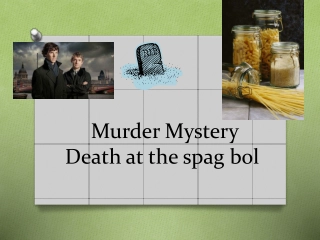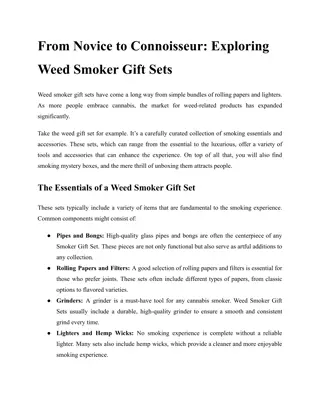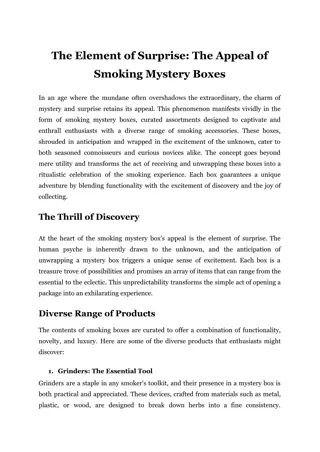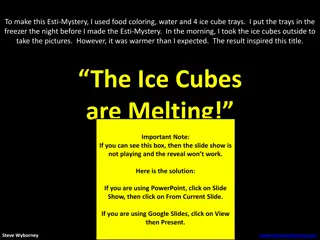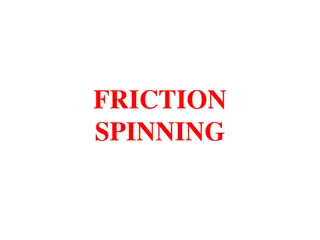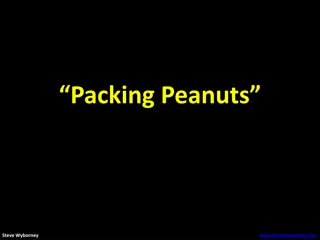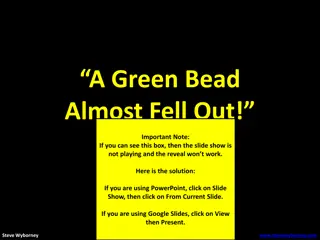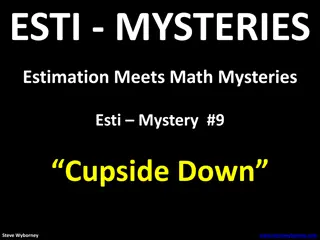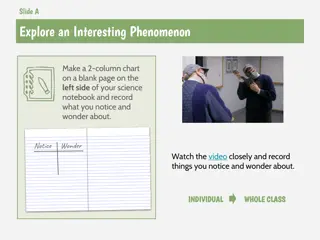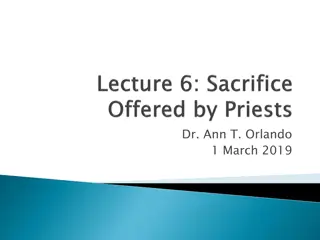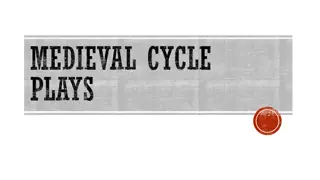Mystery of Speargrass Awns: Twisting Phenomenon Unveiled
"Explore the fascinating behavior of Black Speargrass Awns as they twist when wet. Through detailed observations and measurements, the study reveals how the awns elongate and rotate, shedding light on the mechanism behind this natural phenomenon."
Uploaded on Sep 16, 2024 | 1 Views
Download Presentation

Please find below an Image/Link to download the presentation.
The content on the website is provided AS IS for your information and personal use only. It may not be sold, licensed, or shared on other websites without obtaining consent from the author.If you encounter any issues during the download, it is possible that the publisher has removed the file from their server.
You are allowed to download the files provided on this website for personal or commercial use, subject to the condition that they are used lawfully. All files are the property of their respective owners.
The content on the website is provided AS IS for your information and personal use only. It may not be sold, licensed, or shared on other websites without obtaining consent from the author.
E N D
Presentation Transcript
Black speargrass is one of the most important grasses for graziers in Central Queensland. It has been observed that when wet, the speargrass awns (which contain a seed head on one end) twist around in a clump. This is thought to help the seed heads embed themselves into the soil.
I decided to look at what makes the speargrass awns twist. I observed the awns under a microscope, and took measurements before and after the awns were placed into a container of water.
13 speargrass awns were tested. All of the awns rotated counter-clockwise when held by the tail end. They completed an average of 9.6 in the first 2 minutes after being immersed in water. After this time, nearly all of their movement had ceased. Speargrass rotations 3.5 Number of speargrass awns 3 2.5 2 1.5 1 0.5 0 5 6 7 8 9 10 11 12 13 Number of rotations completed
The awns measured an average of 83.5 mm before wetting. After 2 minutes immersion in water, this rose to an average of 85.9 mm an increase of 2.4 mm, or 2.8%. Length Therefore the speargrass awns somehow get longer when they twist around. 100 90 80 Average length (mm) 70 60 50 40 30 20 10 0 Before After
To confirm that the awns were not merely expanding, I measured their diameter with a micrometer. There was no significant difference in diameter before and after wetting (an average of 0.342 mm compared to 0.34 mm), which suggests that the awns were not expanding in all dimensions. However it was very difficult to get an accurate diameter reading with the micrometer, as the awns tended to get squashed by it.
There was a moderate relationship between the length of an awn and the number of times it rotated. This suggests that the increase in length causes the twisting, or vice versa.
Length vs rotation 14 12 Number of rotations 10 8 6 4 2 0 0 0.5 1 1.5 2 2.5 3 3.5 4 Increase in length (mm)
I examined some awns under a compound microscope and found that they appear to consist of many strands, coiled around like a rope. I also examined the same awns after they had been wet.
I used the photo analysis program Tracker to measure the angles that the spiralling strands made with the side of the speargrass on 2 awns, before and after they were wet.
The average angle before wetting was 13.4, and the average angle after wetting was 1.8 - a decrease of 88.6%. Groove angle 18 16 14 12 Average angle ( ) 10 8 6 4 2 0 Before After
I was now in a position to hypothesise about how the speargrass awns twist. From my observations, it appeared that the awns were made up of many tiny strands, spiralling around the centre. I hypothesised that the spiralling strands untwist when exposed to water.
Next, I cut one awn in half, and looked at it under the microscope. It appeared to be hollow, with only one or two layers of strands around the outside. I realised that the untwisting of the spiralled strands would cause the awn to become longer, and this was what caused the awns to increase in length. Moreover, I realised I could calculate the theoretical increase in length that an awn would experience, as shown on the next slide.
d h L h d
I know the circumference of the cylinder, from measuring it with the micrometer (0.34 mm). The average angle that the strands twisted around the awn was 73.6 . Using trigonometry, I can therefore calculate the height that is required for one strand to completely go around the awn. h = d tan( ) = 0.34 mm tan (73.6 ) = 3.63 mm
I also calculated the predicted increase in length if the spiral completely unwound. L = d / cos( ) = 0.34 mm / cos(73.6 ) = 3.78 mm This is equal to a 4.1% increase in length.
Change in length 4.5 4 3.5 3 Increase in length (%) 2.5 2 1.5 1 0.5 0 Theoretical 1 2 3 4 5 6 7 8 9 10 Awns tested
My calculations indicated that the awns should increase in length more than I observed; this is probably due to the fact that not all of the awns consist of spiralled strands the tail end consists of a single strand.
It appears that the rotation of speargrass awns is due to the untwisting of the many strands that make up the awn.
I am hoping to study the movement of speargrass awns further, and also investigate whether the twisting action does help embed the seeds into the soil.


